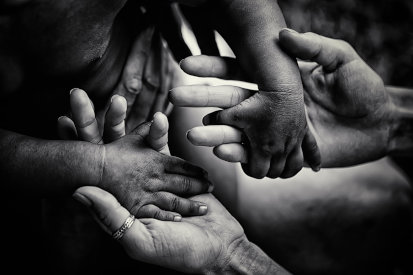It is unknown how the term “crimes against humanity” was first developed.
Some scholars refer to use of similar terms in the context of slavery, whilst others refer to the mass killing of Armenians in the Ottoman Empire.
Crimes against humanity constitute one distinct category of international crimes addressed by the United Nations Office on Genocide Prevention and the Responsibility to Protect, in addition the crime of genocide and war crimes.
On its website, the United Nations provides insight into the elements of this crime, and why it is classified as a separate crime distinct from genocide and war crimes.
Legislation
Unlike genocide and war crimes, crimes against humanity have not yet been codified in a dedicated treaty of international law. Despite this, the prohibition of crimes against humanity is considered a peremptory norm of international law applicable to all States.
Furthermore, many States have also criminalised crimes against humanity in their domestic law.
Defining crimes against humanity
The 1998 Rome Statute establishing the International Criminal Court (Rome Statute) offers the following definition of crimes against humanity:
- For the purpose of this Statute, ‘crime against humanity’ means any of the following acts when committed as part of a widespread or systematic attack directed against any civilian population, with knowledge of the attack:
- Murder;
- Extermination;
- Enslavement;
- Deportation or forcible transfer of population;
- Imprisonment or other severe deprivation of physical liberty in violation of fundamental rules of international law;
- Torture;
- Rape, sexual slavery, enforced prostitution, forced pregnancy, enforced sterilization, or any other form of sexual violence of comparable gravity;
- Persecution against any identifiable group or collectivity on political, racial, national, ethnic, cultural, religious, gender as defined in paragraph 3, or other grounds that are universally recognized as impermissible under international law, in connection with any act referred to in this paragraph or any crime within the jurisdiction of the Court;
- Enforced disappearance of persons;
- The crime of apartheid;
- Other inhumane acts of a similar character intentionally causing great suffering, or serious injury to body or to mental or physical health.
- For the purpose of paragraph 1:
- ‘Attack directed against any civilian population’ means a course of conduct involving the multiple commission of acts referred to in paragraph 1 against any civilian population, pursuant to or in furtherance of a State or organizational policy to commit such attack;
Elements of the crime
The above definition of crimes against humanity effectively contains three elements:
- A physical element, which includes the commission of any of the above acts such as murder or torture
- A contextual element: “when committed as part of a widespread or systematic attack directed against any civilian population”; and
- A mental element: “with knowledge of the attack”
A number of the required physical elements are very similar to the physical elements required for the crimes of genocide and war crimes. For example, “Rape, sexual slavery or enforced prostitution” is one type of war crime covered by the Rome Statute, whilst “Killing members of the group” may constitute genocide.
The contextual element requires that crimes against humanity requires large scale or systematic violence, which is not random.
Crimes against humanity can be distinguished from genocide and war crimes through closer examination of the contextual and mental elements.
How are crimes against humanity distinguished from genocide?
Whilst genocide requires the intent to destroy a national, ethnical, racial or religious group, crimes against humanity do not need to target a specific group. The victim of the attack can be any civilian population, regardless of its affiliation or identity.
Furthermore, whilst genocide requires proof of a specific discriminatory intent in line with the above, crimes against humanity require proof of a general intent to attack a civilian population.
How are crimes against humanity distinguished from war crimes?
A number of common elements are required to establish the presence of war crimes as outlined in the Rome Statute, for example that the “conduct took place in the context of and was associated with an international armed conflict.”
Crimes against humanity on the other hand do not require the existence of armed conflict, or the knowledge that armed conflict was taking place.
War crimes also require that the victim/s were protected under one or more of the Geneva Conventions of 1949, whereas crimes against humanity may be directed against any civilian population.



